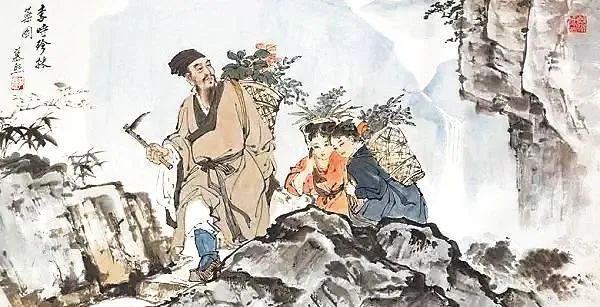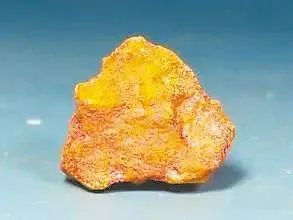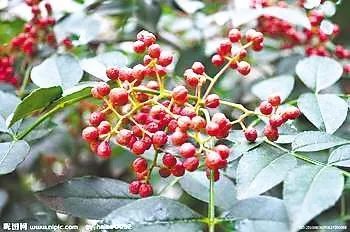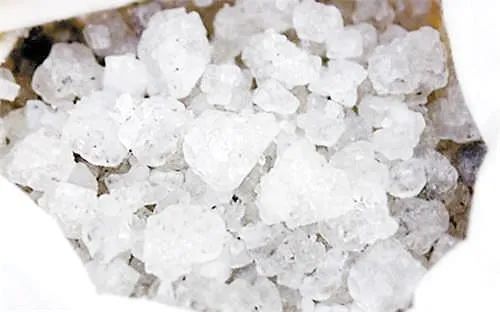[Survival Gansu] Ancient Gansu's epidemic prevention drugs
Author:Gansu released Time:2022.09.08
Saying the source Gansu
Ancient Gansu's epidemic prevention drugs

(The pictures in this article are all data maps)
Plague, also known as plague, refers to a type of disease with severe epidemic and contagious. The Eastern Han people Xu Shen's "Said the text" explained that "epidemic, the people are all ill." That is to say, everyone's illness is called epidemic, which obviously refers to infectious diseases. The ancients believed that epidemic disease was caused by sorbe, and the qi refers to the poisonous gas, heterogeneity, miscellaneous gas, and evil qi in the air. This kind of mirror is caused by abnormal operation of nature. Therefore, in ancient Chinese history books, the epidemic was recorded in "Xiangyi Zhi" and "Five Elements".
The emergence of plague accompanied by human beings pose a great threat to human life security. Human beings have also been recorded in the plague very early, and China has gradually formed a relatively complete Chinese medicine epidemic prevention system. Historically, Zhengshi records more about the Gansu epidemic. There are many materials used in ancient Gansu for epidemic prevention. Now introduce four types of majestic, green wood, red salt, and Shu pepper to readers.

realgar
realgar
Ms. yellow, commonly known as "cocks", orange granular solid or orange -yellow powder. Traditional medicine believes that male yellow medicine is prominent. The earliest Chinese grass book "Shen Nong's Materia Medica" said that it had the function of "killing essence, evil spirits, evil spirits, and backworm poisoning, winning five soldiers". The Song of the Song Dynasty also described that "the yellow -yellow black and black are smoked yellow, the main sores, and the insecticidal." According to the sterilization and disinfection effect of the majestic yellow, the ancients often used it to use the turbidity to prevent plague. In terms of epidemic prevention, the use of majestic use is mainly worn, applied, and sparkling wine.
Wear it is to put the male yellow and other incense bags on the body. Some scholars have statistics on the prevention and treatment of epidemic diseases in the 59 ancient medical books before the Qing Dynasty, and found that it includes 193 Chinese medicines, with a total frequency of 714 times. Among them, the most frequently used drugs are majestic, reaching 38 times, accounting for 5.32%of the total frequency, which are applied to 80%of the prescriptions. In addition, 17 single -flavored prescriptions are used for sachets, and male yellow is ranked among them. The Qing people's "Songfeng said" records the method of wearing the sachet: "The red silk sewing triangle sac Sheng Wuyan, with the left arm, can still be hung on the portal."
Apply, refers to applying male yellow in the nasal cavity and other parts. The Qing people's "Foreign Life Fang" records: "Xiong Huangye is in the ductive, and the water is in the nostrils, that is, the same bed with the patient, and it is not contagious." Applying the male in the nasal cavity can prevent the epidemic from entering the human body through the nasal cavity. In addition, the male stimulus sneezing can discharge the dirty epidemic that people smell at the home of the plague and discharge the nose in vitro, avoiding infection. "Foreign Shouli Fang" records the specific location of the whole body: "Make the bottom of the sieve, to apply the five hearts, the forehead, the nose, the middle of the person and the ear door". Outside the nasal cavity, you can also apply it to the top of the head, forehead, ear door, palm, feet, and other parts.
The old custom Dragon Boat Festival has the habit of drinking male rice wine. The Qing people's "Qing Jialu" records: "Researching the male and yellow, dandruff root, and drinking it, it is called male rice wine." Gu had the saying that "drinking male rice wine, and the sick magic goes away." Add a small amount of majestic to the wine to solve the virus. The male yellow is slightly toxic, and the male rice wine is not suitable for children to drink. To this end, adults dip the wine to apply it on the forehead of the child to achieve the role of evil spirits and disqualing. The Qing people's "Yanjing Year" records: "Every day to Duanyang, since the day of the first day, take Xionghuang wine to bask in it, and use Tu Xiaoyu and the nose and ears to avoid poison." "Gu Shiyun Do not forget, holding the forehead king of Ai Pu. "It means that the Dragon Boat Festival holiday, the child holds the leaves of Ai leaves, wears a puppet, and uses male rice wine to write the word" king "on his forehead. The folklore "White Snake Biography" has the original plot of the Dragon Boat Festival white snakes because of drinking male rice wine, which also shows that male rice wine has the effect of exorcising evil spirits. In addition, the Eastern Jin Dynasty Ge Hong's "Elberry Ready Fang" records the "Plague Plague" Xionghuang Pills: "Gracence, Dan Sand, Basan, Alum Stone, Aconite, Dry Ginger, etc. One pill swallowed, such as flax big, nine days, it will be diseaseless. "
Many places in Gansu produce majestic yellow and are found in History records in Hexi and Longnan. In comparison, Longnan, especially Wudu, and Dangchang, are good for the quality of yellow. In the middle of Tang Zhenguan, Dangzhou found a few feet of majestic majestic yellow. Today's Longnan region is humid and hot, and the farmhouse is used to scattered male yellow powder and male rice wine on the corner, bottom of the bed, etc. The purpose is to repel the environment and clean the environment.

Aoki
Aoki
The connection between Aoki Xiang and Gansu is found in the Sui Dynasty. In the five years of great careers, Emperor Sui Yang carried the westward patrol and crushed Tu Guhun. "(Fan) Zi Gai with Duo Duo 瘴, offers the green wood, and dews with the fog." Fan Zigai has served as the history of Liangzhou, and is familiar with the climatic characteristics of today's Qinghai Lake. However, the "fog" here is not the water mist and clouds caused by weather changes, but refers to mosquitoes.
The ancients believed that "mosquito is like fog to cause” ". , Is a small mosquito, the small and black person named the named. The Song people's "Ya Ya" records: "The joy is flying chaotic, like mosquitoes and small, and they look like fog." Small mosquitoes gathered together, looking far away like smoke. The group of crickets are also called "母", and the mother is the root cause of the disease. The southern 疠 疠 is considered typhoid in the Central Plains area. Therefore, Fan Zigai's fog dew actually speak 疠 疠 instead of rain. Tuguye has radon, and it is recorded before Sui. "Wei Shu Gao Zongji" records that in September 461, the Northern Wei army pursued Tu Guhun. The iliac disease occurred in Liangzhou and Qinghai. As for the mosquito reunion into fog, it is still visible to this day. In the summer wheat field in the Yellow area of Jingyuan, a group of mosquitoes are reunited into wheels, which is quite common. In the area of Longnan, people are called little mosquitoes in their spoken words. Ancient painting

Aoki Xiang is also known as Mu Xiang, which is a good effect on avoiding plague. "Shen Nong's Materia Medica" records: "Weixin, the main evil, and the ghost of the poisonous epidemic temperature." Aoki Xiang, also known as "Wumu incense", referred to as "Wu Xiang". Tang Wang Xuanhe's "Three Caves Pearl Pork" describes: "The five incense, that is, Aoki incense. One five roots, one stem and five branches, one branch of five leaves, and five sections of the leaves, so the name is Wu Xiang, the burning can be thoroughly nine days, and it can be thoroughly nine days. . "In the Southern Song Dynasty Wang Guanguo" Xuelin · Wumu Xiang ":" The ancient medicine prescription has Wuxiang San, and its prescription is suspended with Aoki, and the Wumu incense is also green wood. "
The ancients wearing sachets

The ancients pounded the green wood in the clothes box or wore it on their bodies, so that the fragrance naturally dipped in clothes. Sun Siyi's "Preparation of Qian Qian Gold" records the smoked clothing party: grinding Aoki Xiang and others into the end, and processing into a pill is used for smoke. Qingmu Xiang is also used to make a bed of beds. "Taiping Guang Ji" quoted "Great Career Heritage" records: there are five fragrance beds in the palace of Emperor Sui Wen, "Spring and summer, nine songs, and phoenixes in autumn, and winter with cotton firing." The five -fragrant heavy bed is equipped with a bed of Wuxiangmu. "North History" also records: "The king's couch is made of a wooden niche, and the gold and silver five -fragrant wood is miscellaneous."
Most literatures are recorded in the south. During the Three Kingdoms, the East of the Three Kingdoms "Nanzhou Foreign Style" said: "The green wood is out of Tianzhu, which is grass -roots, such as licorice." However, the Governor Qingmu incense also has a literature basis. Bei Liang Duanlong's "Liangzhou Ji" records: "The mountains of Zhizhan, in the west boundary of the county, more than east -west miles, north and south. There are pine, cypress, and Wumu. A deleted Dan Mountain. "Among them, Wumi is Aoki incense, which is produced in Zhizhishan. From this point of view, Fan Zigai's Qingmu Xiang, which was dedicated to Emperor Sui Yang, was naturally produced. "Compendium of Materia Medica" "Wood, grass too. Honey incense, because of its aroma like honey." After litting the green wood, the aroma can float for nine days. The flue gas that floats on the nine days can dispel mosquitoes and avoid the spread of plague. What needs to be added here is that since the Ming Dynasty, Aoki Xiang has become the right name of the aristoltaine roots. In order to show the difference, it was originally called Aoki incense as Nanmu Xiang and Guangmu Xiang.
Spoil

Spoil
Gansu Longnan is rich in peppercorns, and it is famous in ancient and modern. The medicinal nature of peppercorns was recognized by people in the spring and autumn. Fan Ye's "Fan Ziran" records: "Shu Jiao, Weixinwen, Lord Evil Qi." "Shennong Materia Medica" records: " Wenzhong. Bone by bone, skin dead muscles, cold and dampness, painful pain, qi. For a long time, the head is not white, the head is not white, and the Sichuan Valley. "Li Shizhen's" Compendium of Materia Medica "records: Objectives, long clothes, light body and good colors, and the elderly to increase the gods. "
There are two ways to drive the evil epidemic with peppercorns, one is to wear. Among the Ma Wangdui Han tombs excavated in 1972, multiple smoke, silk bags, embroidered pillows and smoked furnace were found. After research and identification, these drugs are Xinyi, Pepper, Mao Xiang, Peilan, etc., are all incense. It can be seen that at that time, people carrying sachets with them, using fragrant pillows, incense and other incense therapy methods to disinfect, clean the environment, and prevent diseases have become a custom.
Another way is to spark the wine. The earlier seeing the "Hou Han Book": "Lan cuisine mountains, pepper wine Yuan Shu." The Tang people Li Xian said, "Pepper wine, and the pepper wine." There are two types of pepper wine used for avoiding plague, one is Tu Sujiu. Ge Hong in the Jin Dynasty believed that Tu Su wine was invented by the Eastern Han Divine Medicine Huayu. Sun Siyi's "Preparing for the Earthwriting" said that the Susu wine can "dispel the epidemic, which makes people do not dye the warmth and typhoid." The Tu Su wine that Sun Siyi talked about was composed of 7 flavor medicines such as rhubarb, Atractylodes, bellflower, and Shu Beili. Drinking Tu Sujiu started with children first, "one person drinks the whole family without epidemic, and the family has no epidemic." After that, the people of all over the past used the "drinking Susu wine" as one of the customs of "drinking evil spirits" during the Spring Festival. Li Shizhen's "treating medicines for all diseases" Yun: "Du Sujiu drank it on New Year's Day, setting up the plague." The second is pepper and cypress wine. The Eastern Han Dynasty Cui Yan's "The Four People's Moon Order" records the habit of the Yellow River Basin: "The first month of the first month is the positive day ... the son -in -law and grandson, each of the pepper wine in his parents, calling for life, and happy." The "Jingchu Shi Ji Ji" of the Liang regime records the habit of the Yangtze River Basin: "Emerging drinks and cypress wine to dispel the epidemic." , Practice the effect of dysfunction. "Compendium of Materia Medica" records the "pepper and cypress wine" to dispel the epidemic: "Drink it on the New Year's Day, and set up the unhealthy qi of the epidemic. "In" The Indications of Hundred Diseases "Yiyun:" Drink it on the New Year's Day in the New Year's Day, and set up the plague. "The Shu pepper mentioned in the use of pepper wine comes from the Longnan area of Gansu. "Fan Ziran" cloud: "Shu Bea, Out of Wudu". "Famous Doctor" said: "A Bajiao, born in martial arts and Ba County." Wudu is the Longnan area of Gansu today. This area is very popular in this area. "Liang Shu · Zhuyi Biography" records "Wuxing Kingdom's Points", and the ruling district of Wuxing Kingdom is in Hui County, Kangxian and Shaanxi Hanzhong. "Southern History Xirong Biography" records that the nipples of the Xihe County of Xihe County today "Planting mulberry, out of silk cloth lacquer wax peppers, etc.". Liang Ren Wu Jun's "Cake" records the famous "Qiu Chi Lianti Pepper". It is said that after Liu Yu's attack, Qin entered Changan and wanted to know Changan cuisine. The official Qin officials recommended Liu Yu for "cakes", and said that the ingredients for making cakes are all famous products in various places. Among them, condiments include "the oranges of the Castle Cream, and the pepper of Qiuchi." This cake can make people "smell fragrance and sorrow, but also see color and fascination", which is rare in the world. In Juyan Han Jane, a prescription also records Shujiao: "Shujiao four -point, bellflower two points, stems two points, Gui Yanyan thousands of miles away from Longnan, found the prescription of Shujiao, indicating that the use of Wudu Shujiao's use range Wide.
Salt
Salt

The salt produced by Gansu is more common in history books, among which Rongyan is the most famous. "Liangzhou Fortune" records: "Salt Mountain Eryue, three colors are quality. The red is like Dan, the black is like a lacquer. It can heal disease. "Tao Hongjing's" Materia Medica Collection Notes "records:" (salt) taste salty, warm, non -toxic. Master killing ghosts, evil bets, poisonous gas, lower parts of insect sores, cold and cold, phlegm in the chest. " Emphasize the salt epidemic prevention function.
"Liangzhou Fortune" records: Rongyan "is willing to be willing, and the writing is written. As a beast to dispel evil, we must wear it." It seems that Rongyan can be used as a decoration. People, or hollowed out, or engraved, make Rongyan into casual objects. At the same time, it is made into a beast shape to dispel evil spirits. In addition, you can also take Rongyan to avoid。. The Qing Dynasty's "Life Collection" records: "Pre -set up 疠 疠: a pound of peach kernels, Wu Wu, and green salt each four or two. One or twenty, the mountain house is especially suitable. "In the Tang Dynasty, the wind of the curse was prevailing. Rinse, it is also forbidden in three or seven times. " The use of salt is to remove the obscurity of the patient. Salt is also regarded as a drug with disinfection. The chanting curse is "you do not get sick, salty salt, bitter vinegar to kill Ru", or the chanting "I come from the south to the north, the salt three dendromes ... "Poison", intended to make salt act on patients through spells, "forced" the disease to yield.
Rongyan was known for its origin, and was known to the Central Plains during the Han Dynasty. "Zhou Li · Tianguan" records: "Wang Zhiyu is ashamed, a total of salt." Zheng Xuan's note in the Eastern Han Dynasty: "Salt, salt, and today's salt." Come, Rongyan is not heavy. "Compendium of Materia Medica" quoted "Liangzhou Foreign Battle" said: "Out of Hu Guo, hence the name of Rongyan." Rong Yan's origin was concentrated in Gansu, Tao Hongjing's "Famous Doctor" contains: "Rongyan Shenghuyan Mountain, And the north of Xiqiao and the southeast corner of the Fulu City of Jiuquan. "Tao Hongjing's" Bencae Scripture Collection "contains:" Today's salt, from Liangzhou, Rui Rui Henan envoys and the northern Huke came from Dunhuang. From Hedo. "It seems that Liangzhou and Dunhuang are the two major production areas of Rongyan. Li Shizhen's "Compendium of Materia Medica" quotes Tao Hongjing Yan Yan Yan Yan's shape performance: "It is shaped as a piece of slices, or like chicken and duck eggs, or like diamond rice, color purple white, not very salty." "New Tang Book" records recorded The Gangzhou tributes are "Rongyan". Guru is in Qinghai today, and southern Liangzhou is not far from each other. It shows that Qinghai was the real estate area of Rongyan in the Tang Dynasty. Tang people's "Stone Ya Ya" contains: "Rongyan, a fairy left water, a Xirong top, a Xirong Chunwei, a stone salt, a cold salt, an ice stone, a light salt salt A purple girl, one ones, a stone, and one of the inverted bones. "It can be seen that Rongyan has a lot of reputation, indeed the top grade at the time. The Song people Su Song's "Materia Medica Sutra" records: "A stone salt is produced in this Jiezhou. In the mountains and stones, it can not help but decoct. It naturally becomes salt. In this way, the salt and Rongyan are homogeneous in Longnan. There are still many materials for the prevention and treatment of plague in Gansu, which is not limited to majestic yellow, green wood incense, Shu pepper, and Rongyan. However, these four medicinal materials can be regarded as national brand drugs. From the perspective of usage, all four medicines can be worn. It should be said that it is necessary to achieve the effect of anti -virus epidemic and not hurt the righteousness. The sachet is a higher safety means. Traditional Chinese medicine believes that the evils of the epidemics are related to moisture, and most of the epidemic is caused by the introduction of the nose and nose from the mouth and nose. The gorgeous, green wood, salt, Shu pepper and other fragrances volatilize a strange fragrance, making the snake bugs smell far away. It not only reduces the source of infection during use, but also plays the role of killing germs and refreshing consciousness. It is the most commonly used drug to prevent "疠". This is why the sachet is prevalent. At the same time, traditional Chinese medicine treats plague. In summary, it is righteousness and disinfection. The environmental disinfection method of "avoiding its poisonous gas" is an important part of eliminating evil. Thousands of years of practice also proves that it is an effective method. Therefore, the habits such as gorgeous yellow powder, male rice wine, etc. are still used so far. Regardless of wearing, brewing wine, and sprinkler, it fully reflects the traditional Chinese medicine system in preventing diseases in preventing plague -the idea of preventing disease -free prevention and early treatment.
At present, people's understanding of plague is more comprehensive and scientific, and prevention and control measures are more effective. It is a good strategy to prevent the ancient people's wisdom, rationally use Chinese medicine resources, consciously cleaning sanitation, insecticidal and eliminating pests, and improving the living environment. (Cui Yongli Liu Zaicong, a special writer of Gansu Daily)
Source: Gansu Daily, New Gansu Client
Edit: Wang Xuexiang Responsible: Zhu Wang School Trial: Xu Minzhi
- END -
Selection of the second "Bird's Appeals" National Aerospace Contest (28)

With the popularity of drones, more and more photographers are involved in the fie...
Research on the Community of Human Destiny and Chinese Literature

Chinese literature is a mixture of time/space, society/history, nation/country, or...